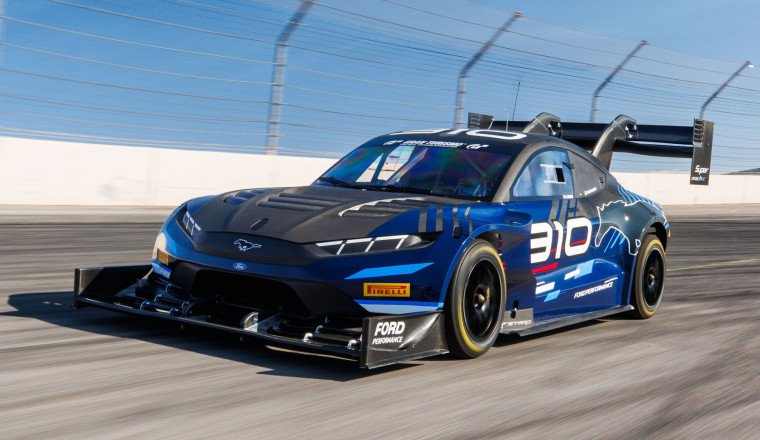
Ford’s steady drumbeat of record-conquering electric performance cars continues in 2025 with the Super Mustang Mach-E. Like the SuperVan 4.2 and the F-150 Lightning SuperTruck before it, this juiced-up race SUV will power up Pikes Peak under the careful control of Ford Performance driver Romain Dumas in yet another attempt to dethrone its own predecessor at the 2025 running of the International Hill Climb event.
Ford’s return to Colorado comes on the heels of a simultaneously impressive and disappointing 2024 outing. Despite a stall that stranded the SuperTruck for just shy of 27 seconds, it was only about 6 seconds slower up the mountain than the SuperVan. Those are some tortoise-and-the-hare type numbers. And the new Mach-E is even faster, Ford says.
When he spoke to us, Ford Performance engineer Zach Burns was visibly proud of what the team accomplished in such a short period of time. Despite being spread across the globe (Europe, North Carolina, Michigan, and elsewhere), they managed to design, prototype, and build a brand-new race car in just under seven months. The physical car didn’t even reach America until early May, when it was quickly shipped to Colorado for its first shakedown drives. With just six weeks from delivery to the green flag, Burns and the rest of the crew had a lot of testing to do.
“There was still snow at the top,” Burns recalled.
This year’s entry is not merely iterative. The closest things you’ll find to carry-over parts from the SuperTruck are all in the powertrain. A few production components remain—door handles, windshield wipers, and motors, things like that—but the bulk of what you see is the result of a ground-up redesign.
Technically, the new Super Mustang Mach-E comes in two flavors. The version that Dumas will pilot at Pikes packs three motors (one front, two rear) with a combined output of 1,421 horsepower. However, there’s an even more extreme variant with four motors (two front, two rear) to achieve a 2,250-hp total.
After mothballing the SuperTruck in October, Ford’s engineers started completely from scratch, throwing out the old race car’s production-based suspension and steel brakes in favor of a new rocker-arm setup and some carbon ceramic stoppers. The Mach-E’s braking system is actually more closely related to what you’ll find in Ford’s GT3 cars than anything you’d see on the street.
The comprehensive re-engineering allowed Burns and the rest of the shop to look for other opportunities to gain performance. EVs aren’t exactly known for being svelte, but at 3,443 pounds, the three-motor variant is pretty light considering the power it lays down and the technology that keeps it glued to the mountain’s surface.
As if a 1,400-horsepower, 3,400-pound race car with instant torque wasn’t already silly enough, the new active aerodynamics setup produces a mind-boggling 6,900 pounds of downforce at Pikes Peak—or essentially twice as much as the car physically weighs. The Mach-E’s 3D-printed skid blocks will see a lot of action as they’re slammed repeatedly into Pikes Peak’s bumpy surface, but at least the new suspension will help keep the race car’s body motions in check. On a smooth track, the aero can be cranked up to deliver up to 12,000 pounds of downforce.
The 2025 Pikes Peak International Hill Climb kicks off June 22; keep an eye out for the Mach-E in the Open class once again. It should put on quite a show.
Got a tip? Share it with us at tips@thedrive.com.
Byron is a contributing writer and auto reviewer with a keen eye for infrastructure, sales and regulatory stories.















Facebook Conversations